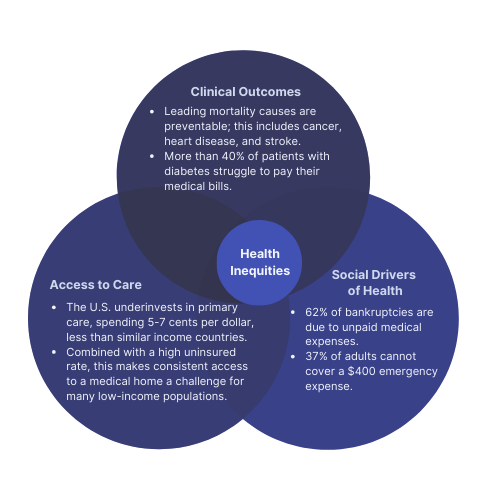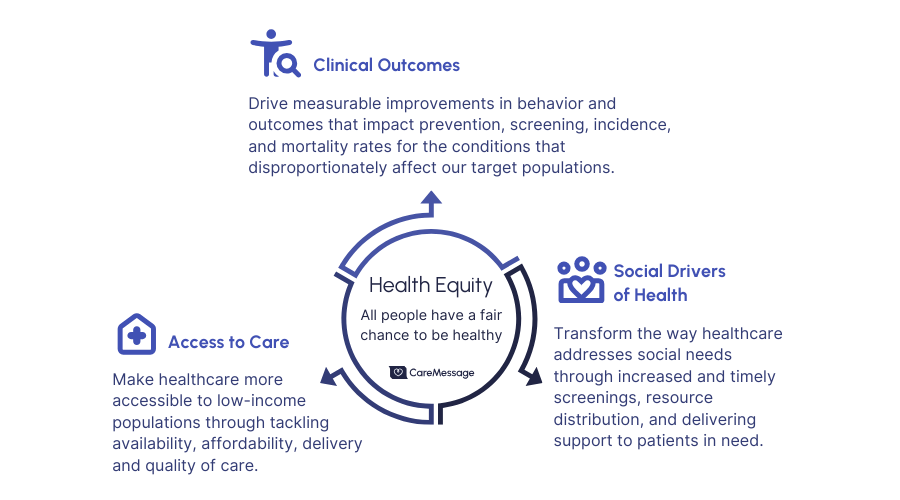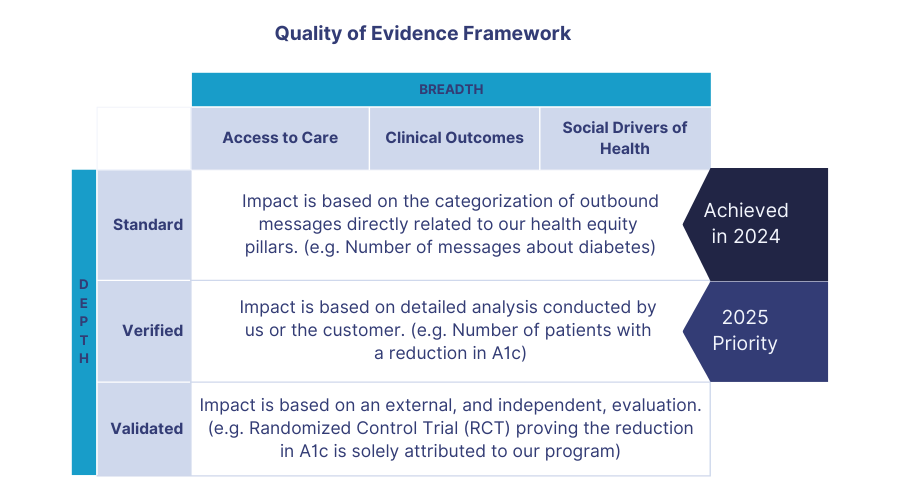We believe in Health Equity for All
Building on over a decade of work with low-income populations and the safety-net, CareMessage delivers measurable improvements in health equity.
ABOUT HEALTH EQUITY
A fair chance to be healthy.
The United States spends more on healthcare than other industrialized nations but sees worse outcomes. Life expectancy varies significantly across economic, racial, and ethnic groups, reflecting global trends of unequal distribution. These disparities stem from generations of underinvestment in primary care, limited access, high costs, discrimination, and systemic poverty.
As a nonprofit, we use technology to advance health equity. We drive measurable improvements, while recognizing the challenge of changing a system shaped over centuries. Building a more equitable healthcare future will take time and persistence, we're on this journey for the long run.

ABOUT CAREMESSAGE
Our Approach to Health Equity
Health equity goes beyond equality. While equality provides the same solution to everyone, equity ensures solutions meet individuals' unique needs. We believe technology plays a key role in enabling these personalized approaches.
CareMessage drives health equity by empowering communities to shape their own outcomes. Our solutions come from people with lived experiences, from communities most affected by healthcare disparities.
We prioritize low-income communities, acknowledging the profound impact of socioeconomic status on healthcare access and basic needs. We also focus on the intersections of income, race, ethnicity, gender identity, and sexual orientation, recognizing systemic inequities come in many forms.
DEFINITION
Our Health Equity Framework
We have selected three core areas where technology has the greatest potential to advance health equity. Each is carefully defined to guide our priorities across partnerships, products, and services. These dimensions serve as a framework for decision-making, ensuring health equity remains central to how we approach and solve challenges.
- Increasing access to care requires a comprehensive understanding of the healthcare ecosystem, including barriers and enablers of service access. Therefore, our focus is on increasing the use of preventive services to ensure more equitable healthcare outcomes.
- Clinical outcome improvements require addressing healthcare inequities in mortality and life expectancy. By starting with prevention and considering each stage of care, we create a comprehensive approach to tackle these disparities effectively.
- Addressing social drivers of health extends beyond the healthcare system. For low-income populations, addressing non-healthcare factors—such as housing, food security, and access to education—is crucial to improving healthcare outcomes. These needs must be tackled alongside healthcare services to achieve lasting improvements in health equity.

IMPACT MEASUREMENT
From Breadth to Depth
Because of the historic lack of impact on systemic inequities, CareMessage is committed to raising the standard for healthcare technology development and impact evaluation. Aligned with our 2028 goal, we’re focused on refining how we communicate CareMessage’s impact on health equity. To do this, we’ve created a framework to assess our quality of evidence and the strength of our findings.

